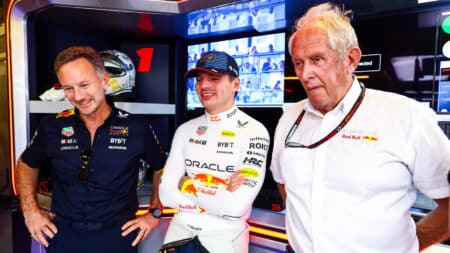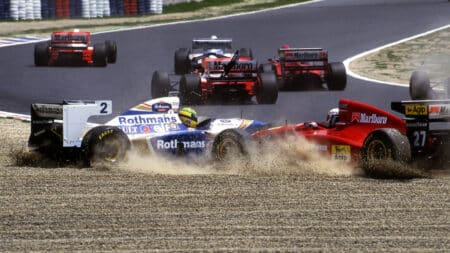
Why isn't 2025 F1 season as close as predicted? The past explains why
McLaren's breakthrough in a near-four-year-old ruleset shows F1 rules convergence is a myth – just like Sebastian Vettel, Red Bull and Renault did in 2013, writes Mark Hughes
Ferrari’s ers system will be monitored and regulated by the FIA
As from the beginning of the first practice session in Monaco, and at the FIA’s insistence, the Ferrari ers system will be fitted with a piece of hardware that will make it impossible to operate in a way that could get around the regulations on energy deployment per lap. This is in response to questions raised by Mercedes’ Niki Lauda.
The FIA’s Charlie Whiting has been very careful to underline that there has been no evidence that Ferrari has been running its unique double-in-tandem battery arrangement in an unscrupulous way. Data from the first five races is still being analysed by the FIA in an ongoing process, and Ferrari is co-operating fully.
Uniquely, within the Ferrari’s battery casing are twin batteries in tandem – and this architecture is exactly as it has been since the beginning of the hybrid formula in 2014. What has been speculated from this year by rivals is whether this might allow a system whereby a second energy output to the ers-K could be used to momentarily boost the energy flow beyond the 120kW limit, by-passing the FIA sensors, possibly by way of a chip modulating the resistance between the two outputs.
This is what has been vexing Lauda who has been quite outspoken in his calling for the FIA to make a ruling on whether twin batteries are permitted. The FIA is not publicly responding to Lauda directly but points out there is nothing illegal about the architecture of the Ferrari system – and that if any team is convinced that something illicit is going on, it should lodge a formal protest.

McLaren's breakthrough in a near-four-year-old ruleset shows F1 rules convergence is a myth – just like Sebastian Vettel, Red Bull and Renault did in 2013, writes Mark Hughes

Madrid finally has a consortium to build the new Formula 1 circuit that will host the 2026 Spanish GP

Helmut Marko caused a stir after the Bahrain GP with his worries that Max Verstappen could leave Red Bull early. But how real are those fears?

Ayrton Senna’s tragic final races in 1994, marked by controversy over illegal traction control and his relentless pursuit of excellence in a challenging car, remain a poignant chapter in F1 history, as Matt Bishop recalls